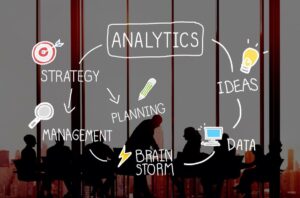The Education Blog

How to Build a Personal Learning Plan for Career Growth
In today’s fast-evolving job market, continuous learning is essential for career growth and long-term success. Whether you’re aiming for a promotion, a career switch, or skill enhancement, having a structured personal learning plan (PLP) can help you stay on track. A well-crafted PLP ensures you prioritise relevant skills, set achievable goals, and measure your progress effectively.
In this guide, you’ll learn how to create a personalised learning plan that aligns with your career objectives, keeps you motivated, and ultimately helps you achieve long-term professional growth.
Why You Need a Personal Learning Plan for Career Growth
1. Structured Skill Development
A personal learning plan provides a clear framework for developing skills in a systematic and organised manner.
Benefits of Structured Learning:
- Prioritisation: Helps you focus on skills most relevant to your industry.
- Efficient Time Management: Allocates dedicated time for learning amidst your work schedule.
- Goal Alignment: Ensures that your learning efforts directly support your career objectives.
If you work in IT, a PLP might include cloud computing or cybersecurity certifications. These can help you stay competitive.
2. Keeping Pace with Industry Changes
Industries are constantly evolving, and continuous learning helps you stay relevant. A structured PLP ensures you are proactively updating your skills.
Advantages of Staying Current:
- Improved Job Security: Makes you less likely to become obsolete in your field.
- Increased Marketability: Enhances your attractiveness to employers and recruiters.
- Adaptability: Helps you quickly learn emerging skills and tools.
A digital marketer should learn about AI marketing tools to stay competitive.
3. Enhancing Your Career Prospects
Gaining new skills helps you get promotions, find better job opportunities, and even change careers.
Career Benefits:
- Higher Earning Potential: Skills in high-demand areas can lead to better-paying roles.
- Networking Opportunities: Expanding your skills may introduce you to new professional circles.
- Leadership Readiness: Prepares you for higher-level roles by building management and strategic skills.
An accountant wanting to be a financial analyst can learn data analysis and financial modelling through a PLP.

Step-by-Step Guide to Building Your Personal Learning Plan
1. Define Your Career Goals
Start by identifying your short-term and long-term career objectives. Knowing what you want to achieve will guide your learning focus.
Questions to Ask Yourself:
- What skills or certifications do you need to reach your next career milestone?
- Are you aiming for a promotion, career success, or specialisation?
- What are the in-demand skills in your industry?
If you want to become a project manager, your PLP could feature certifications like PMP (Project Management Professional) and training in leadership and agile practices.
2. Identify the Skills You Need
Once you’ve defined your goals, list the skills and knowledge areas necessary for achieving them.
How to Identify Relevant Skills:
- Analyse Job Descriptions: Look for recurring skills in your desired roles.
- Consult with Industry Experts: Seek advice from mentors or colleagues.
- Use Online Tools: Platforms like LinkedIn Learning and Coursera highlight in-demand skills.
For a software developer, key skills include coding languages like Python and Java, as well as frameworks and tools such as Git or Docker.
3. Choose Learning Resources and Platforms
Select reliable learning platforms and resources to acquire the necessary skills.
Popular Learning Platforms:
- Online Courses: Platforms like Udemy, Coursera, and edX offer flexible learning options.
- Books and Journals: Industry books and publications provide in-depth insights.
- Webinars and Workshops: Offer practical, hands-on knowledge from industry experts.
- Podcasts and YouTube Channels: Great for continuous learning on the go.
A data scientist can use DataCamp or Kaggle for practical data projects. They can also read books on machine learning for more insights.
4. Create a Timeline with Clear Milestones
Break your learning plan into manageable phases with deadlines to stay on track.
Tips for Creating a Timeline:
- Short-Term Goals: Set goals for 1-3 months (e.g., completing a course or certification).
- Mid-Term Goals: Plan for 6-12 months (e.g., applying new skills in projects).
- Long-Term Goals: Define goals for 1-3 years (e.g., achieving a leadership position).
Example: If you aim to become a business analyst within 12 months, your timeline might look like this:
- Months 1-3: Complete courses in data analysis and SQL.
- Months 4-6: Earn a certification in business analytics.
- Months 7-12: Apply for business analyst roles.
5. Implement and Track Your Progress
Consistent tracking helps you stay accountable and motivated throughout your learning journey.
Tracking Methods:
- Use Learning Apps: Apps like Notion, Evernote, or Trello help organise your goals.
- Create a Study Calendar: Block dedicated time for learning and practice.
- Track Achievements: Keep a record of completed courses and certifications.
If you want to improve your coding skills, use GitHub. It helps you track your projects and see your progress over time.

Tips for Maximising Your Personal Learning Plan
1. Prioritise Practical Learning
Apply your skills through hands-on projects to reinforce what you learn.
- Build a portfolio with real-world projects.
- Seek freelance or volunteer opportunities to practice.
- Contribute to open-source projects or industry challenges.
An aspiring graphic designer can make mock projects for clients to build a portfolio.
2. Leverage Peer Learning and Mentorship
Learn from others by joining learning communities and seeking mentorship.
- Join online forums and discussion groups.
- Participate in study groups or local meetups.
- Find a mentor who can guide your career development.
A tech professional can join groups on Reddit, Stack Overflow, or LinkedIn to learn from peers.
3. Stay Flexible and Adaptable
Be open to adjusting your learning plan as your goals and industry trends evolve.
- Reassess your goals every few months.
- Incorporate new skills relevant to emerging industry demands.
- Stay updated on new learning platforms and trends.
A digital marketer might focus on AI-driven marketing since it’s becoming important in the industry.
The Power of a Personal Learning Plan for Career Growth
Building a personal learning plan is a powerful way to boost your career growth and skill set. By defining clear goals, selecting the right learning resources, and tracking your progress, you can stay ahead of industry trends and achieve long-term professional success.
Whether you’re aiming to master new skills, switch careers, or gain industry certifications, a structured and consistent learning plan will help you unlock your full potential and thrive in your field.









